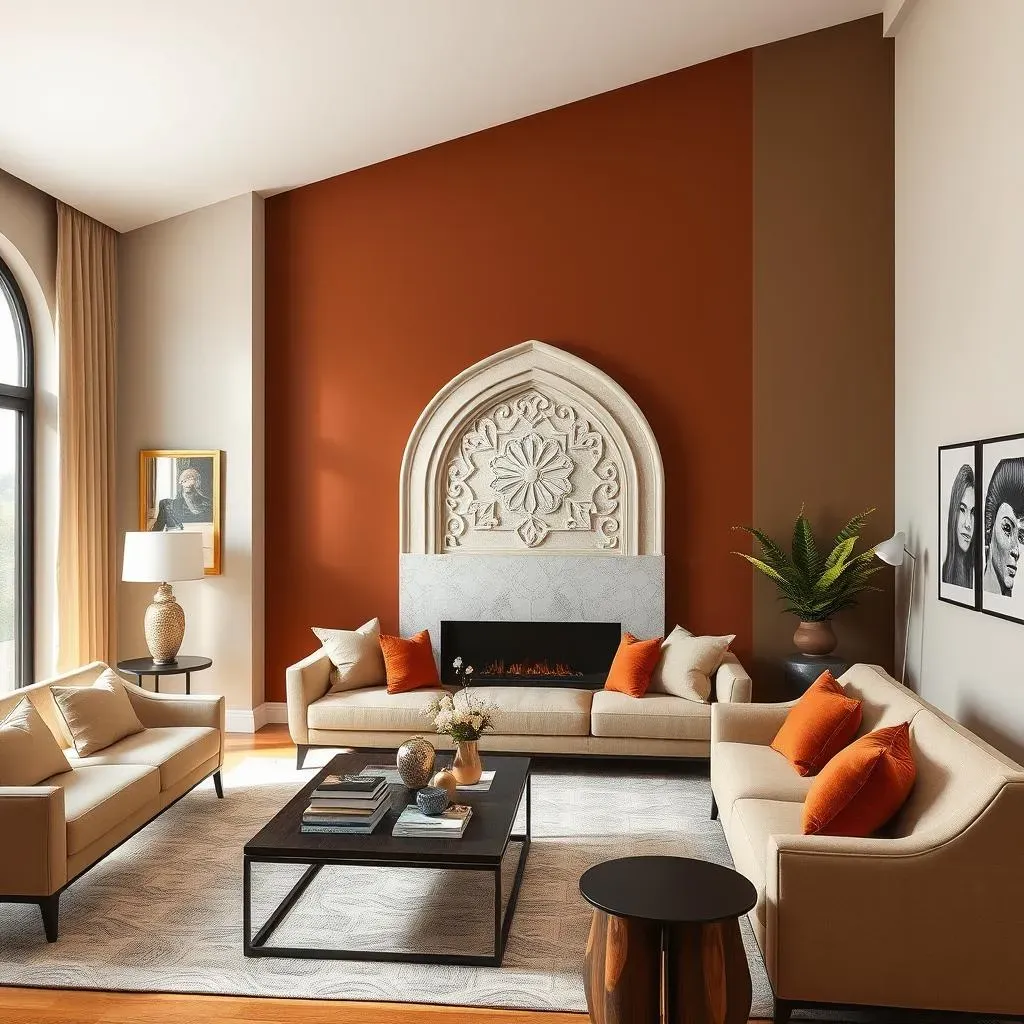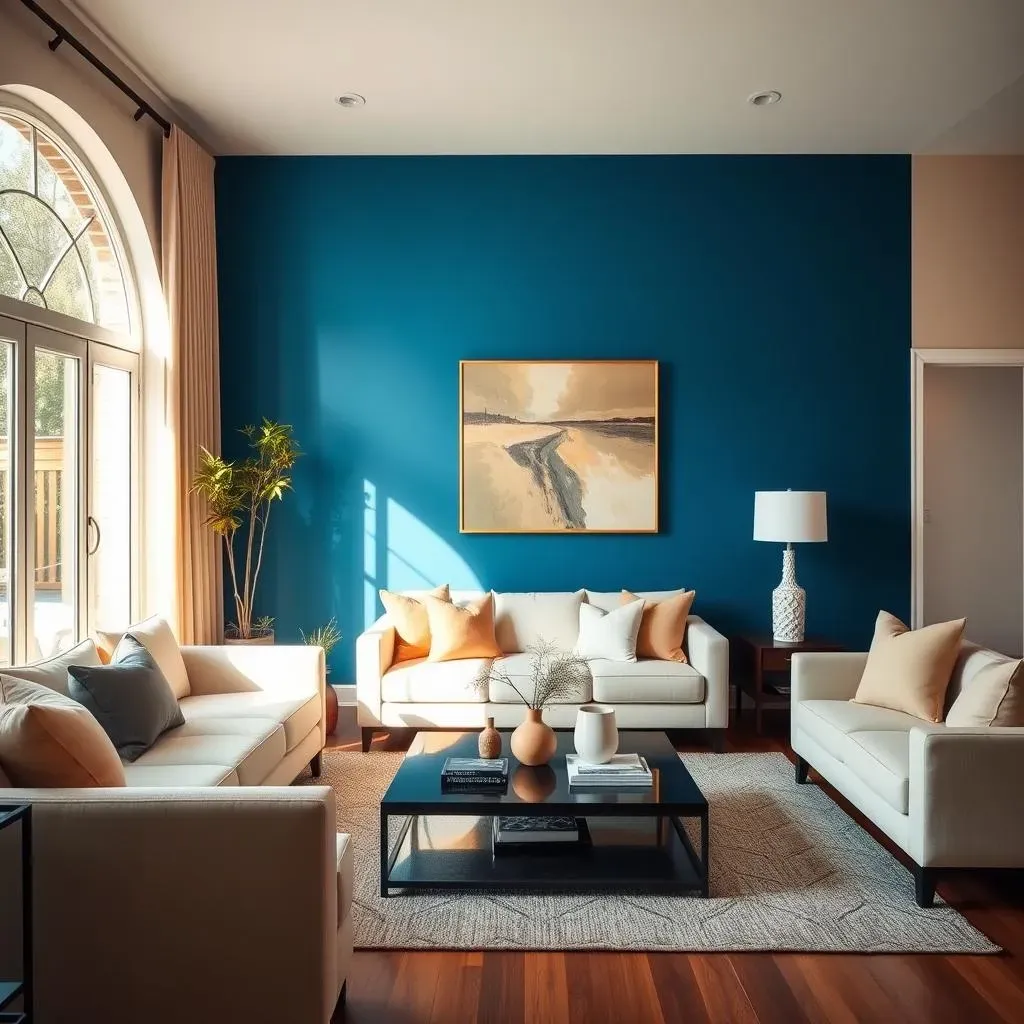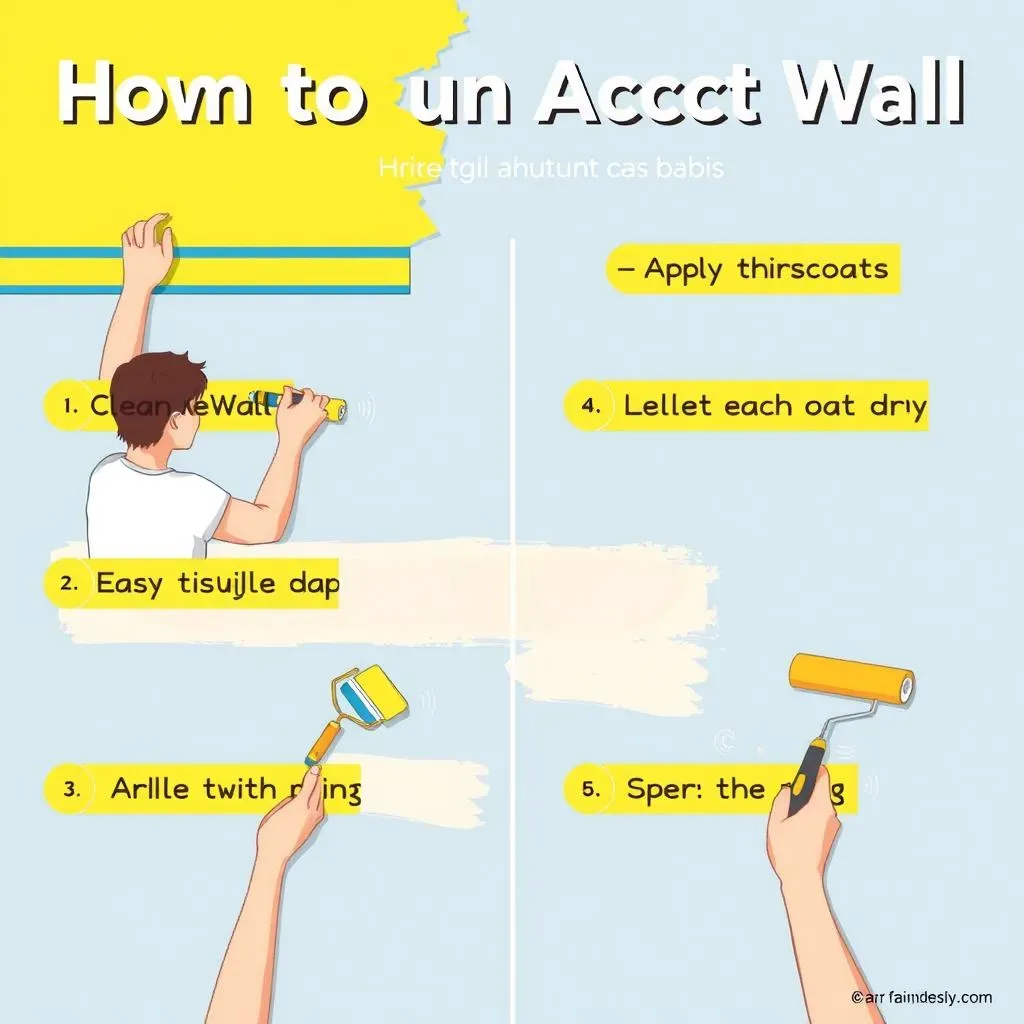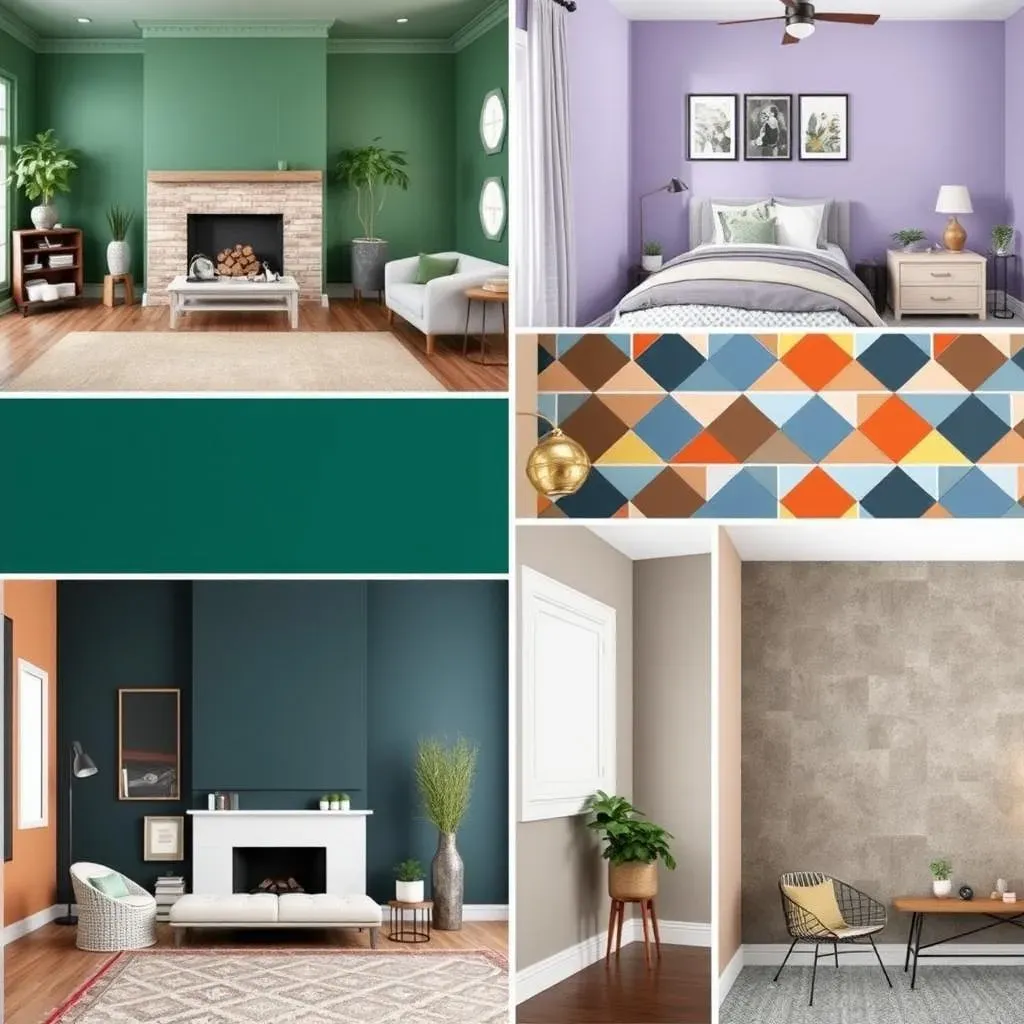Table of Contents
Tired of staring at the same old boring walls? Want to inject some personality and pizzazz into your living space? Well, you've come to the right place! This article is your go-to guide for everything you need to know about "accent wall with paint ideas". We're not just talking about slapping on a random color; we're going to explore how to choose the perfect wall, brainstorm creative paint ideas, and pick colors that will make your space pop. Think of it like this: your walls are a blank canvas, and we're about to turn you into a master painter. We'll walk through choosing the right wall, from fireplaces to bookshelves, and cover how to make a small space feel huge, or a large space feel cozy. We'll look at colors that create contrast and highlight architectural details, and how to paint like a pro. So, grab your paintbrushes, and let's get started on this colorful adventure!
Choosing the Right Wall for Your Accent Paint Ideas

Choosing the Right Wall for Your Accent Paint Ideas
Okay, so you're itching to create an accent wall. Awesome! But before you grab that paint can, let's talk strategy. Not every wall is created equal, and picking the wrong one is like wearing socks with sandals – just not a good look. The best accent walls have a purpose. Think about walls that already have something going on, like a fireplace, a built-in bookcase, or even just a cool architectural detail. These are your prime candidates. It’s the wall that naturally draws your eye when you walk into the room, not some random wall that just happens to be there. You want a wall that can handle the spotlight. Don’t pick a wall that’s already cluttered with windows or doors; it'll look like a confusing mess. Instead, find the wall that's begging for a little extra attention.
Think of your room like a stage. The accent wall is where the main act happens. It's the backdrop for your favorite furniture or the highlight of the room's architecture.
It's also about how the light hits the room. Does the sun stream in and make one wall glow? That's a great wall for an accent. Or is there a wall that’s always a little shadowy, perfect for a dramatic color? Consider the natural light, it can change how a color looks.
Wall Type | Why It Works | Why It Might Not |
|---|---|---|
Fireplace Wall | Natural focal point, adds drama | Can be too busy if already ornate |
Built-in Bookcase Wall | Adds depth and interest, highlights collections | Might overwhelm a small room |
Headboard Wall | Creates a cozy feel, defines the bed area | Only works if the bed is the main focus |
Architectural Detail Wall | Highlights unique features, adds character | Can be too busy if already ornate |
Exploring Different Accent Wall Paint Ideas

Exploring Different Accent Wall Paint Ideas
Alright, so you've picked your wall, now comes the fun part: the paint! Forget boring beige or plain white; this is your chance to go wild (well, maybe not too wild). Let's talk about some different accent wall paint ideas. First up, we have the classic solid color. This is where you pick a single color and just go for it. Think a bold, deep blue for a calming bedroom, or a vibrant red for a dining room that screams "party!" Solid colors are great because they’re simple, but that doesn't mean they have to be boring. The key is to choose a color that complements the rest of your decor, or to choose a color that you just really love.
Then, there are patterns. Stripes are always a good option. Vertical stripes can make a room look taller, while horizontal stripes can make it look wider. You could also try a geometric pattern using painter's tape, or even a freehand design if you're feeling brave. Don't be afraid to experiment with different types of paint too. Matte paint gives a flat, non-reflective look, while gloss paint will give you a shiny finish. There are also specialty paints, like chalkboard paint, or even magnetic paint, which can add some fun and functionality to your wall. And if you are feeling super creative, try adding texture with paint techniques like sponging or rag-rolling. It's all about making your accent wall unique to you.
Paint Idea | Description | Best For |
|---|---|---|
Solid Color | One single color painted on the wall | Simple, bold, versatile |
Stripes | Vertical or horizontal stripes | Adding height or width |
Geometric Patterns | Shapes and lines using tape | Modern, artistic |
Textured Paint | Techniques like sponging or rag-rolling | Adding depth and interest |
Specialty Paint | Chalkboard or magnetic paint | Adding function |
How to Select the Perfect Paint Color for Your Accent Wall

How to Select the Perfect Paint Color for Your Accent Wall
The Color Harmony
Okay, so you've got your wall picked out, and you're ready to unleash your inner artist. But hold up a second – choosing the right color isn't as simple as just picking your favorite hue. It's about creating a vibe that feels right for your space. First things first, let's talk about the existing colors in your room. Look at your furniture, your rugs, your curtains – what colors are already dominating the space? You want your accent wall to complement these colors, not clash with them. Think of it as a dance; you want the colors to move together harmoniously, not step on each other's toes. A good rule of thumb is to choose a color that's a few shades lighter or darker than the other walls. This creates a nice contrast without being jarring. If your walls are a light gray, consider a charcoal gray or even a deep navy for your accent wall. It's all about finding that sweet spot.
And hey, don't be afraid to look at a color wheel! It's not just for art class anymore. You can use it to find colors that are analogous (next to each other on the wheel) or complementary (opposite each other). Analogous colors create a calm, cohesive look, while complementary colors offer a more vibrant, dynamic feel.
The Light Factor
Now, let's talk about light. Natural light, artificial light – they all play a huge role in how a color appears. A color that looks amazing in the paint store might look completely different in your living room. This is because light can change the intensity and temperature of a color. For example, a bright sunny room might make a cool blue appear even more icy, while a dimly lit room might make a deep red feel even darker. So, before you commit to a color, grab a sample and paint a small section of your chosen wall. Observe how it looks at different times of the day and under different lighting conditions. This can save you from a major paint color disaster. It's like trying on clothes before you buy them; you want to see how it looks in your space.
Also, consider the direction the room faces. North-facing rooms tend to get cooler, softer light, while south-facing rooms get warmer, brighter light. This means that a color that looks great in a south-facing room might look dull in a north-facing one, and vice versa.
Room Direction | Light Type | Color Recommendation |
|---|---|---|
North-facing | Cool, soft light | Warmer tones, light colors |
South-facing | Warm, bright light | Cooler tones, bold colors |
East-facing | Bright morning light | Balanced colors |
West-facing | Warm afternoon light | Cooler tones, muted colors |
The Emotional Impact
Lastly, think about the mood you want to create in your room. Colors have a powerful impact on our emotions. Blue, for example, is often associated with calmness and serenity, making it a great choice for a bedroom. Red, on the other hand, is a vibrant and energetic color, perfect for a dining room or a living room where you want to encourage conversation. Green is associated with nature and tranquility, while yellow can bring a sense of joy and optimism. So, think about what you want your room to feel like, and choose a color that aligns with that. It's not just about how a color looks, it's about how it makes you feel. This is your space, make it feel like home.
Don't be afraid to break the rules a bit. If you love a color, go for it! It's your wall, your space, so you get to decide what works best. The most important thing is that you love the color and that it makes you happy every time you walk into the room.
Tips and Tricks for Painting Your Accent Wall

Tips and Tricks for Painting Your Accent Wall
Alright, you've picked your wall, you've got your color, now it's time to actually paint! But before you go all Jackson Pollock on your wall, let's talk about a few tips to make sure your accent wall looks like a masterpiece, not a messy mishap. First up, prep work is KEY. I know, I know, it's the boring part, but trust me, it's worth it. Start by cleaning your wall. Dust, cobwebs, whatever, get it off. Then, grab some painter's tape and carefully tape off all the edges, making sure to press it down firmly so paint doesn't bleed through. This is not the time to rush! You want crisp, clean lines, not wavy, sloppy ones. And if you have any holes or cracks, fill them in with spackle and let it dry before you start painting. Think of it as laying the foundation for your masterpiece.
Next, let's talk paint application. Don't just dunk your brush in the can and start slapping paint on the wall. Instead, pour a small amount of paint into a paint tray, then dip your brush or roller into the paint, making sure not to overload it. You want to apply the paint in thin, even coats, letting each coat dry completely before applying the next one. This will prevent drips and ensure that the color is nice and even. Also, if you're using a roller, use a smooth, up-and-down motion, overlapping each pass to avoid streaks. And if you're painting stripes or a geometric pattern, take your time and use a level to make sure your lines are straight. Remember, patience is your friend here. Rushing will only lead to mistakes.
Tip | Why It's Important |
|---|---|
Clean the Wall | Ensures the paint adheres properly |
Use Painter's Tape | Creates clean, crisp lines |
Apply Thin Coats | Prevents drips and uneven color |
Let Each Coat Dry | Ensures a smooth finish |
Use a Level | Ensures straight lines for patterns |
And finally, when it comes to removing the painter's tape, don't wait until the paint is completely dry. You want to remove it while the paint is still slightly wet. This will prevent the paint from peeling off with the tape and will give you those perfect, clean lines we all crave. And if you do happen to get a little paint on your ceiling or trim, don't panic! Just grab a small brush and carefully touch it up. Remember, no one's perfect, and even the most experienced painters make mistakes. The key is to learn from them and keep on painting. If you follow these tips, you'll have a beautiful accent wall that you can be proud of. It's your space, make it amazing.
Also, remember to have fun with it! Painting can be a bit of a chore, but it's also a great way to express yourself and add some personality to your home. So, put on some music, grab your paintbrush, and let your creativity flow.
